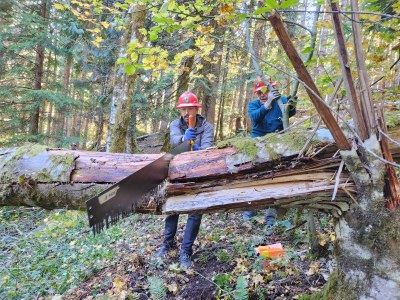
Trip Report
Stewardship - Dry Creek
On a perfect mid-autumn day on this trail at the north end of Lake Cushman, we did not find what we expected, and had a much more interesting day instead.
- Sun, Oct 29, 2023
- Stewardship - Dry Creek
- Dry Creek
- Stewardship
- Successful
-

- Road rough but passable
-
The last few miles of the road along Lake Cushman are badly potholed. The trail is in good condition, and the first two miles of it have now been cleared.
This trip was suggested late in the season by senior trail crew leaders as an opportunity for a new stewardship leader to qualify as a trail crew leader. Rather than wait until spring, we decided to make a try for it this year, hoping to hike before the monsoon rains and early snow began.
A few of the Olympia trail stewards, including Ginger Sarver, had hiked the Dry Creek Trail, at the north end of Lake Cushman, in August, and noticed several areas where fallen trees lay across the trail, mostly at knee to chest height, and some on the ground. These were all within two miles of the trailhead. Some inquiry revealed that the WTA had done two major projects on this trail, and had left these behind simply due to running out of time. Logging these out was suggested as an easy work project for a new mentored leader, with simple cuts close to the ground and no complications.
Our weather concerns were assuaged by good forecasts in the days before the trip. The day arrived with a frosty morning, clear skies, a forecast high around 50F and light winds. We met at Haggens at 7:30 and we were at the trailhead just past 9:00 a.m.
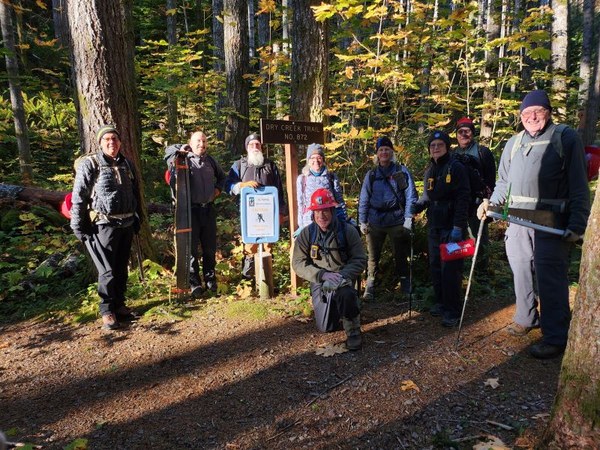
As we hiked in, we passed under some fallen trees across the trail. One was above shoulder height, and another above head height. They were held in place where they had fallen, bound against standing trees. For now, there was enough room to pass underneath, at least without a snow pack on the trail. In time, they would likely work their way down to blocking the trail. These were complicated by factors such as standing dead trees next to them, which might be toppled by work on the problem tree, and by shattered trunks as well as their height off the ground. We assessed them and decided that they would best be left for another time.
We had planned on working in two saw teams. One team would tackle a site with a few downed trees and the other would leapfrog ahead, working our way through six or seven sites. After we had been hiking in for a while, the radio crackled with Ginger’s voice. She said that she had passed three of the areas where she had found downed trees on the trail in August, and they had already been cut and removed. Continuing on through all the areas where Ginger had noted fallen trees on the map, we found more sites with recent saw work, and no downed trees on the trail. Someone had come in ahead of us and picked all the low-hanging fruit. We had done a little brushing and clean up, but wanted to do something substantial.
We decided that the time had come for the complicated trees that we had just left for another time. Ginger’s group made short work of a tree on the ground while the rest of up went ahead to get started on the suspended tree.
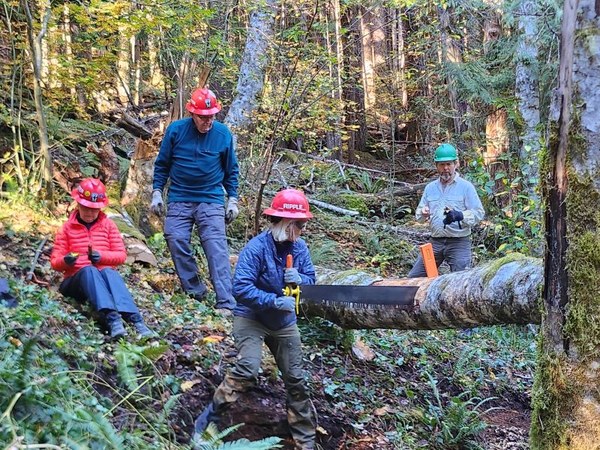
This tree had snapped a few feet above the ground, and was partly attached to the stump, which was still rooted. It had fallen downhill across the trail, split and broken where it hit a healthy standing tree, and was stuck about head high. We cleared brush from around the fallen trunk and level out platforms on the slope to give the sawyers access and a place to stand. We made the first cut on the uphill end near the stump, where the fallen trunk was reachable with a saw. The cut end dropped to the ground, putting more of the trunk within reach. The next cut was made, using wedges to keep the saw from binding.
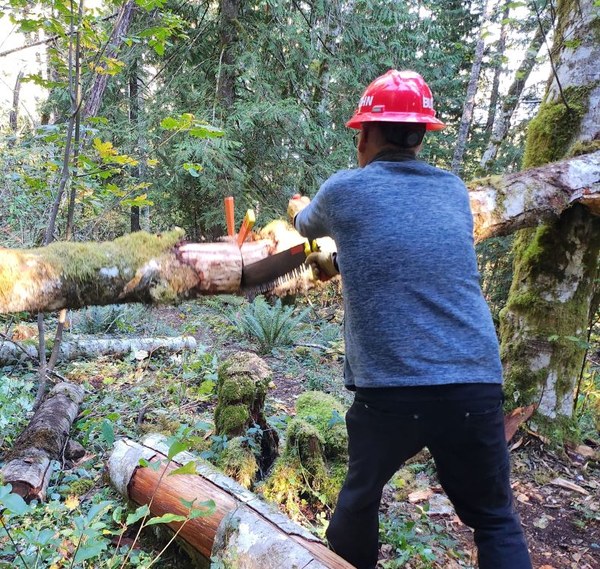
We now had the cut ends on the ground, but the remaining section was standing nearly vertical with the broken end still braced against the standing tree by the fallen top half. We lassoed the broken top with one strap and passed the other around the cut bottom, pulled in opposite directions and put it on the ground, where it was rolled off the trail. We moved on to the next challenge.
A fir tree had fallen downhill across the trail. What had been the upper portion came to a stop when it became bound between two standing trees, one on each side. The unsupported middle spanned about fifty feet. The uphill side was out of reach. The downhill edge of the trail had a high spot under the tree. We could reach it with a two-person saw; not comfortable, but workable. This was a difficult cut, requiring a top cut, an undercut, another top cut, and chopping out some wood with an axe.
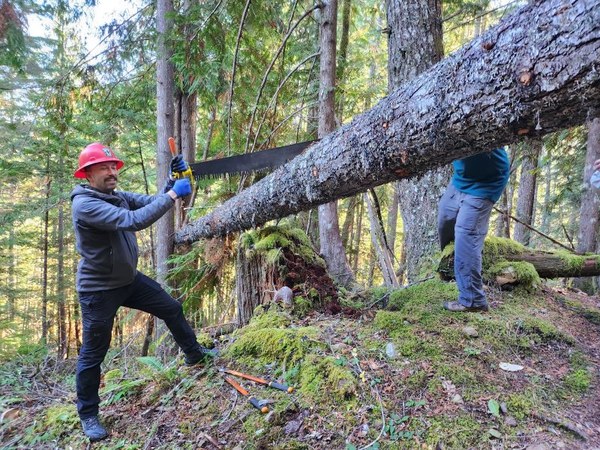
With the downhill end on the ground, we could reach the trunk on the uphill side of the trail and made our last cut. We packed up our gear and were hiking out at 3:30, and at the trailhead about 4:00 with plenty of daylight to spare.
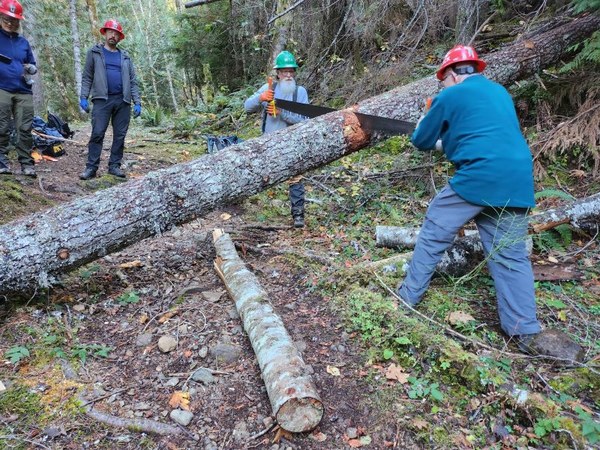
The first two of our party hiking out ran into a local camp owner. In conversation they learned that he was the one who, in the past week, had gone up the trail on his e-bike with an electric chainsaw and cut the trees that we had been planning on cutting. Although he spoiled our plans, he did us a great favor. We changed our plans and did some much more challenging, educational and interesting work instead.
 Mike Forsyth
Mike Forsyth